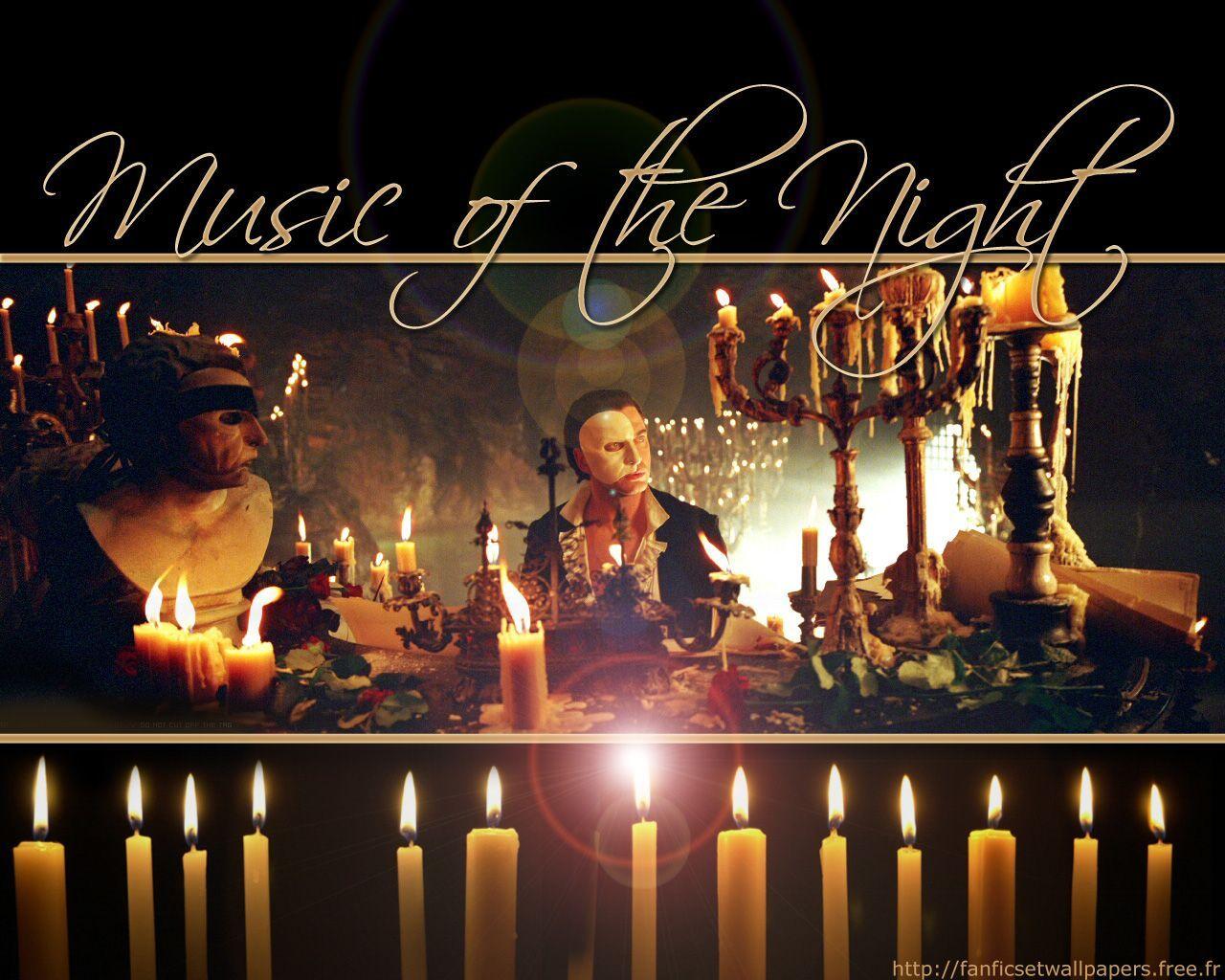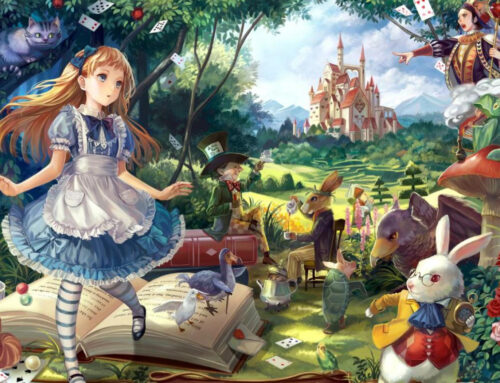The Phantom of the Opera is a musical drama film released in 2004, directed by Joel Schumacher and based on the popular 1986 musical of the same name by Andrew Lloyd Webber. Set in the Paris Opera House in the late 19th century, the film follows the story of a mysterious figure known only as the Phantom, who haunts the theater and terrorizes its inhabitants while becoming infatuated with the talented soprano Christine Daaé. The film stars Gerard Butler as the Phantom, Emmy Rossum as Christine, and Patrick Wilson as Raoul, the Vicomte de Chagny. The Phantom of the Opera is known for its elaborate musical numbers and grand set pieces, as well as its dramatic portrayal of the Phantom’s obsession with Christine and the timeless themes of love, loss, and identity.
Not in the mood to read? Watch the video here.
(***may contain spoilers)
(1) The doll in the Phantom’s lair that is supposed to resemble Emmy Rossum is not actually a wax mold. It is Emmy Rossum. The production produced a mask of her face to use on the mannequin but when they put in the fake eyes it didn’t look like her. She suggested to stand in as the mannequin instead. This was done by her being made up like a doll with waxy makeup on, and her standing very, very still.

(2) The Phantom speaks only 14 of his lines and sings the rest.

(3) Hugh Jackman was considered for the role of the Phantom, but was occupied by his filming of X-Men (2000).

(4) In playing Christine’s father in this movie, Ramin Karimloo becomes the first actor to have played all three of Christine’s loves. Her father in the movie version, and both Raoul and the Phantom on the stage.

(5) The chandelier weighed 2.2 tons, cost $1.3 million, and was provided by Swarovski. It had a stunt double for riskier scenes. There was also a third chandelier made, that was equipped with electricity and lighting for the opening scene.

(6) The lit candelabras that rise from the water were not done with special effects or CGI lights: the special wicks ignited when they reached the air. This effect was done in one take and didn’t work again after that.

(7) Charlotte Church and Anne Hathaway were considered for the role of Christine Daaé.

(8) In the transition where Christine is contemplating and moving towards engaging the coach to take her to her father’s grave, the melody playing is “Beneath a Moonless Sky,” a duet between Christine and the Phantom from Andrew Lloyd Weber’s sequel to Phantom entitled “Love Never Dies.”

(9) Emmy Rossum (Christine Daae) is much younger than her male counterparts, both whom she kissed in the movie. At the time of shooting, Emmy was 16, Patrick Wilson (Raoul) was 30, and Gerard Butler (The Phantom) was 34.

(10) At the end of the Masquerade scene, Raoul briefly enters a circular chamber full of mirrors. This is a reference to the original Phantom of the Opera novel, in which the Phantom used the mirrored chamber as a torture chamber to drive victims insane.

(11) The instruction to “Keep your hand at the level of your eyes” is another reference from the book, in which the Phantom was adept at disposing of victims with the “Punjab lasso.” Keeping one’s hand at the level of one’s eyes kept the Punjab lasso away from the victim’s neck and was the only defence.

(12) To add to his deformity, Gerard Butler had a string tied just below his eye to cause it to appear more deformed when pulled down. Cast members would often tug on it as a joke between takes.

(13) Gerard Butler’s first days of filming were five weeks into production, where he and Emmy Rossum did “Past the Point of No Return” which took three days to film.

(14) Neither Gerard Butler nor Emmy Rossum had seen the musical prior to receiving their roles.

(15) John Travolta and Antonio Banderas were both considered for the role of the Phantom. Banderas actually spent several years in vocal preparation, and sang the role of the Phantom in Great Performances: Andrew Lloyd Webber: The Royal Albert Hall Celebration (1998).

(16) Andrew Lloyd Webber composed 15 minutes of new music for the film.

(17) It took four hours for Gerard Butler to be fitted with full makeup and prosthetics.

(18) The Phantom’s white half-mask prop that Gerard Butler wore for the film sold for £6,450 on eBay.

(19) The theatre fire was an actual fire. Joel Schumacher wanted realism, so they destroyed the theatre for the scene.

(20) When the Phantom is taking Christine to his lair, he places her on a black horse for a while. This is not part of the show, but is a nod to the original book, where the Phantom uses a horse named Cesar to transport Christine part of the way.

(21) Michael Jackson wanted to play The Phantom himself in the film version. Jackson had a strong interest in musical theatre and was a fan of Andrew Lloyd Webber’s stage adaptation when he saw it open in New York in 1988, in which Jackson saw it several times since and talked to Lloyd Webber backstage. However, Lloyd Webber has said that although Jackson wanted to play the film version of The Phantom, Lloyd Webber felt that it was too early for “Phantom” to become a film because the stage musical had just opened at that time.

(22) The sweeping camera angles during “All I Ask of You” made it necessary to shoot multiple takes of the kiss between Emmy Rossum and Patrick Wilson. Emmy Rossumhad to ice her lips between takes to prevent them from swelling.

(23) All of the principal actors sang in the film except for Minnie Driver. Most of the actors have a background in musicals or opera, but Driver (a skilled singer) had no experience in opera and was dubbed by Margaret Preece, a singing teacher from Solihull, UK. However, Driver did contribute the film’s end title song, “Learn To Be Lonely,” written specifically for the film by Andrew Lloyd Webber.

(24) The music is played by a 105-piece orchestra.

(25) In an interview on The View (1997), Minnie Driver (Carlotta) says that to master her diva-like Italian accent, she channelled an old neighbor she had when she lived in Venice as a child.

(26) The “Why So Silent” scene is a reference to Edgar Allan Poe’s “The Masque of the Red Death.”

(27) At the beginning of the movie, the cast is rehearsing for an opera called “Hannibal” and they are singing “Hannibal Comes!” This is not an actual opera; Andrew Lloyd Webber wrote this for the beginning and wanted to help the actors warm up to the part with a laugh, hence the silly make up and costumes.

(28) In Christine’s debut performance as the star of the Opera House, she wears a costume that is an exact replica of the outfit Empress Elizabeth (aka “Sisi”) of Austria wears in her most famous portrait. This includes the white diaphanous dress with full, billowing skirt, as well as the diamond star-bursts in her hair and earrings. This is not surprising when one considers the fact that Andrew Lloyd Webber is one of the most important collectors of artwork from this period, and would be familiar with the portrait in question.

(29) Since the crew didn’t want to have to actually build an Opera House, the exterior is actually a doll house type model that was filmed in a studio. In “All I Ask of You (Reprise)”, when the Phantom is on the balcony, he is not really there. He was edited in. The footprints in the snow were made on the model where they filmed the camera zooming out and then put in the Phantom.

(30) In April 2004 an audience of the stage version of “The Phantom of the Opera” in London were asked to stay behind at the end and record the sound effects for the chandelier crash in the movie.

(31) At the end of the film, Christine’s gravestone gives her date of birth as 1854. The main story takes place in 1870, which means Christine is 16 during the events at the Opera House. Emmy Rossum, the actress who played her, was 16 when filming started.

(32) The main story takes place in 1870, and the auction takes place in 1919. In the final scene, the year of Christine’s death is marked as 1917 on her tombstone. In the stage play, the main story takes place in 1881, the auction in 1910, and Christine is said to have died in 1907.
















